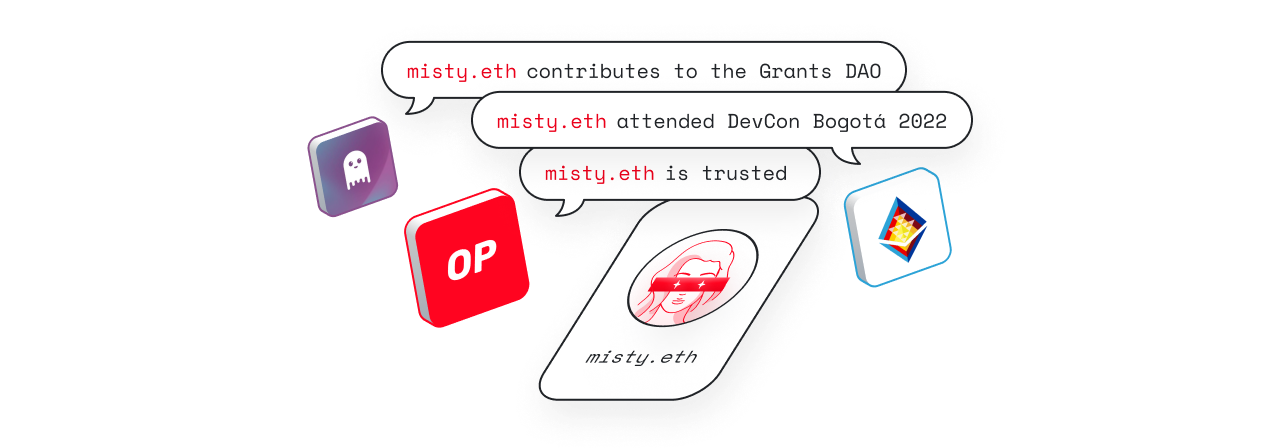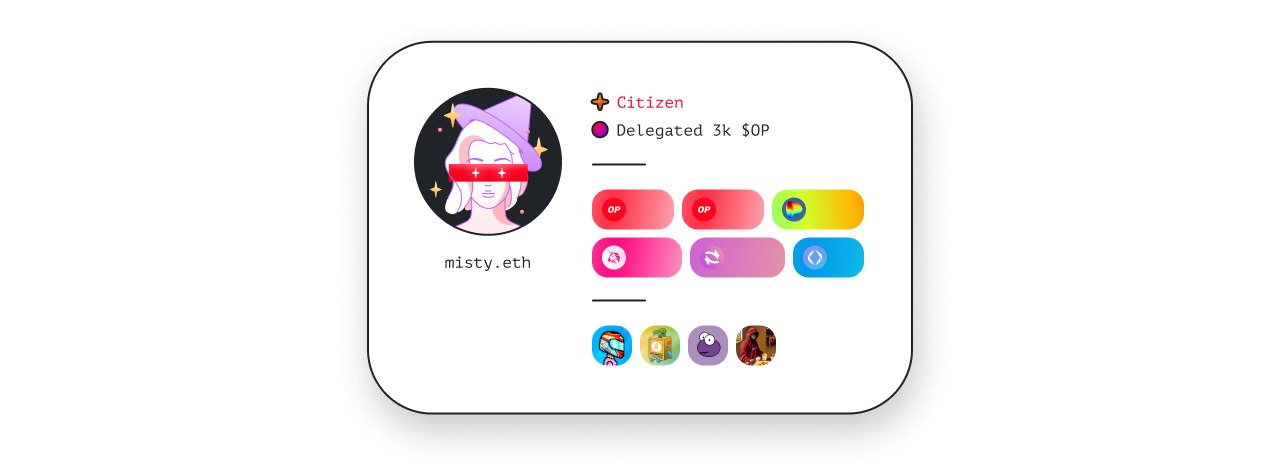Making Blockchains Human-friendly

Alpha leak: today marks the start of the beta for the Optimist NFT, a customizable profile picture project meant to represent user identity across the Optimism ecosystem. Coming soon to a Collective near you! 👀
The Optimist NFT is one of the first applications built on top of the AttestationStation, a neutral reputation contract built on OP Mainnet.
The goal of the AttestationStation is to provide a neutral, accessible data source for builders creating reputation-based applications. By enabling anyone to make arbitrary attestations about other addresses, we can create a rich library of qualitative and quantitative data that can be used across the ecosystem.
Let’s dive in!
The Optimistic Vision
For crypto to benefit humanity, we need to ensure that humans have a voice.
Today’s economies favor the preferences of the wealthy—even in crypto. ERC-20 tokens are the dominant form of on-chain identity, and token votes are the main way that preferences are expressed. Token votes serve a useful role, but they don’t represent the preferences of people—they represent the preferences of capital.
Reputation is key to making blockchains less-plutocratic and to maximize human utility. Just as token systems reveal the preferences of token holders, a reputation layer will allow us to gauge the preferences of human beings.
By creating a robust reputation layer, we will finally have the data to measure impact. Only then will we be able to measure impact and realize our vision of a world where impact == profit, and where human preferences are promoted.
From 0 to reputable, backed by the blockchain
The first step towards this vision begins with the introduction of the AttestationStation, a permissionless smart contract deployed on OP Mainnet that gives users the ability to make arbitrary attestations about other addresses. As an example, an attestation may assign a ‘trust score’ to an address. Attestations could present any qualitative statement:

Anyone is able to read, write, and build on top of this data primitive. When multiple entities participate in providing qualitative attestations about actors within a community, an invaluable data library is created for the broader ecosystem.
To paint a picture — actors might submit attestations that are contextual to their brand, ecosystem, and governance structure.
Other actors may then take a subset of available attestations and design interpretations that are meaningful in their respective contexts.

With that being said, attestations aren't a new concept. So why is the AttestationStation different from other attestation products? The AttestationStation is deliberately dead simple and serves as an open invite to ecosystem contributors to come build an open and permissionless attestation graph together.
Creating this system in a decentralized and open-source manner is important because it allows for greater inclusion and representation of different perspectives. This can help to ensure that the system is fair and accessible to all, and that it accurately reflects the diversity of the communities it serves.
So what exactly is a decentralized attestation layer?
The key to building a neutral attestation layer boils down to permissionlessness. Most identity services in crypto today derive reputation from a single source or service.
Any point of centralization can be used to capture a decentralized protocol. So, to build a decentralized identity system, we can’t rely on any single, centralized service or provider.

How do we create a decentralized identity system? Instead of having a single entity owning user data and identity, OP Mainnet's reputation layer will be formed by a network of peer-to-peer (p2p) attestations.

We can then take the graph of p2p attestations from the AttestationStation and run computations like EigenTrust over the set of data to derive identity sets on top of a purely subjective web of trust.
To build a robust, trustworthy identity network, these computations will be run iteratively. We can start with a purely subjective web of trust, and use that starting point to derive a larger web of trust, and so on — we can begin to establish a credibly neutral reputation that is entirely peer-to-peer.

A canvas for builders
To create an invaluable data library for the broader ecosystem, we’re launching the AttestationStation in collaboration with teams across the ecosystem including Clique, Flipside, Gitcoin Passport, Guild, nxyz, Otterspace, Trust Protocol, and Wonderverse. These teams are either adding attestations to the contract, indexing event data to make it easily accessible to developers, or integrating the AttestationStation as part of their existing products.

This initial experiment is an open invite to build together towards a better future. By working together to build out this library for the community, we’ll be able to unlock a variety of new use cases: on-chain representative governance, credit scores empowering the next generation of DeFi protocols, reputation profiles for DAO contributors and ecosystem participants, and a multitude of decentralized social apps, are all possible with this simple primitive.
Realizing the potential to transform web3 with identity will be a community effort. This is why we are starting small with the AttestationStation and this open invite to come experiment with us. We can already think of a bunch of fun projects to build today, like:
- EigenTrust — Compute EigenTrust trust scores for a subset of the AttestationStation!
- SybilRank — Create a SybilRank calculator! (h/t Barry Whitehat for the suggestion)
- Data visualizations — Create data visualizations representing the different types of attestations in the AttestationStation
- Predictive attestations — Instead of attesting “I trust XYZ”, try fun attestations like, “I believe XYZ will be considered trusted by a majority of node in the future”. Plus, what if we add a slashing condition to the predictive attestation?
- Attestation delegation — Build a system which manages attestations automatically for users. This system should enable users to delegate some of their attestation assignment to a third party. For instance, users may opt-in to delegating their trust scores to a sybil detection court system. Another project is to build that sybil detection court system!
- Attestation import — Write proxy contracts which import attestations of various formats into the standardized AttestationStation format so that they can be consumed by the standard AttestationStation tooling.
- Viral attestations — Create systems which make it fun and easy for users to attest useful information about each other.
- …The list goes on! This is the tip of the iceberg with what is possible.
The number of projects that are possible and the way these projects all contribute to each other’s success underscores the importance of modularity, composability, and open source. We know we can’t do this alone, and we are so excited to be a part of a broader community that solves identity together, as a public good.
To learn more about how teams are building on top of the AttestationStation or to get involved, visit our developer documentation. A huge thank you to Hans for helping bring this experiment to life.
We’re excited to see what experiments and applications are built on top of the AttestationStation. If you’re building on the AttestationStation, please reach out - we can’t wait to see what we can all build together!

